Whitewater Rafting Tours in the Pacific Northwest
Adventure Is Calling
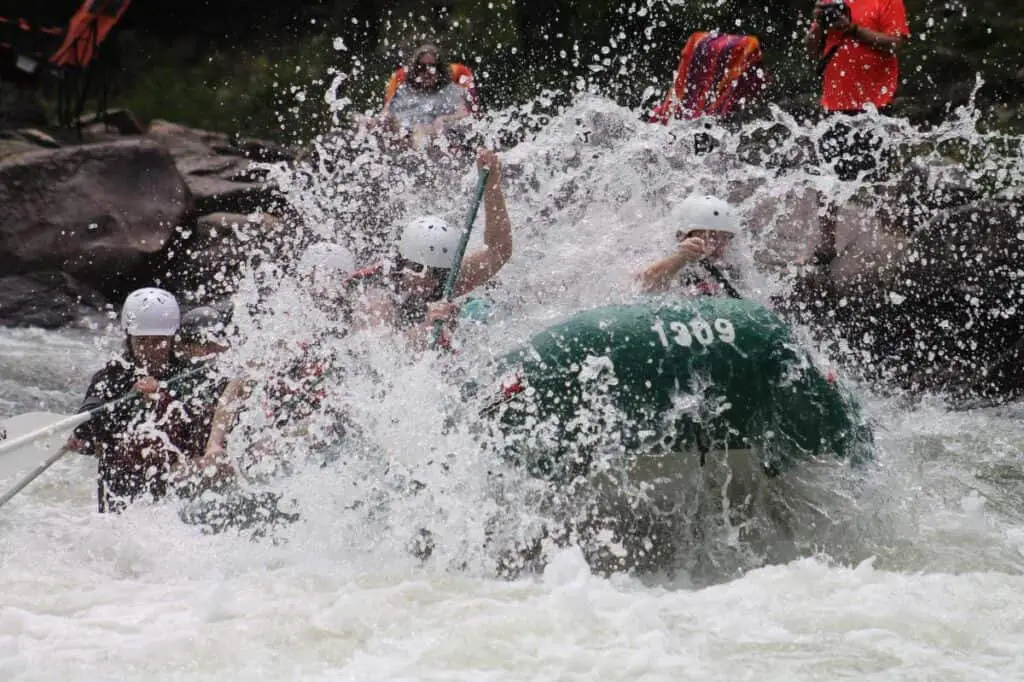
If you are looking for a way to increase the level of adrenaline in your bloodstream, then whitewater rafting is the activity for you!

Guide At a Glance
- Is this author an Adventurer?
- Is this Guide based on experience?
Your Next Quest
What you need to know before you go!
When just the regular rafting seems to be enough and when it already starts to be boring, that is the time to switch to the whitewater. Whitewater rafting will provide that extra adrenaline rush, it will be unpredictable, and will be very fun for the whole team.
Whitewater rafting is something you can go do solo, or with a team of people you already know, the only trick is to find the right place, and by the chance, North Pacific seems to be the ideal destination. If you choose to go solo, most likely you will be paired with other people to fill up the boat’s capacity.
How do you go whitewater rafting?
Whitewater rafting is a form of rafting that is practiced in rivers that have a very high glide slope – the one that is enough to disturb the normal flow of the river. This way the turbulence is being created, which means that it takes more concentration and power to maneuver the rafting boat, due to the fact that you are moving in the fast waters.
This activity is beneficial to those who are at the top of their condition. It will increase your stamina, concentration will engage all your muscles. The adrenaline flow will increase the blood flow to your brain, and muscles, and will signal your body to produce more sugar. All these factors in combination will make you more alert and you will have faster reactions, which can sometimes be crucial when you are on the river, and in a situation where you need to take fast decisions.
There are five classes of rapids, and depending on them there are several age restrictions. Also, different rafting companies will have additional and different requests when it comes to the minimum age that can go rafting.
- Class I – most 5-year-olds can attend a class I river activities – the water is very calm without gradient;
- Class II – 10-year-old is the minimum age requirement for class II, which has some slow water gradient and riffles;
- Class III – 14 years – this is the beginning of whitewater! Expect standing waves, small drops, and dangerous waters;
Class IV – 16 years minimum – advanced whitewater! Expect recirculating holes, 3-4-ft drops, and strainers; scouting or practice required. - Class V – expert– only for advanced rafters! Expect recirculating holes, large drops, strainers, and powerful recirculating currents. Falling in the current could mean death, even for strong swimmers.
- Class VI – considered “non-navigable” water, only attempted with extreme risk of death and dismemberment.
Once you choose a place where you want to go water rafting, make sure to check whether they have some local tour guides that offer raft rentals. Depending on the class of the river, you may also choose to go rafting on your own, but this is considered to be very dangerous.
After booking a tour, you will receive a short brief from the guide on what to expect, how to behave, what equipment to wear, what to do with your stuff, and where to check-in. After that, all you have to do is to get in the raft and have some fun!
Teach me your ways!
Whitewater rafting is a lot safer and easier than whitewater kayaking.
6-8 man rafts are the most common sizes, with the smallest commercial rafts just containing four people, and the largest up to 12!
An inflatable raft is very difficult to sink, pierce or flip. It even bounce off rocks! Whiterafts have bailing valves to prevent water from filling up the raft.
To learn more about the different types of whitewater rafts, visit here.
As a paddler, it’s your job to listen to your guide and follow commands. While verbal commands may vary from place to place, here are the basics:
- Paddle Forward: Paddle forwards in sync with everyone else in the boat! The front two paddlers opposite each other must watch each other; all others should follow the man in front.
- Paddle Backward: Paddle backwards in sync with everyone else in the boat! The front two paddlers opposite each other must watch each other; all others should follow the man in front.
- Left Back: Left-side of raft paddles backwards; right-side paddles forwards.
- Right Back: Right-side of raft paddles backwards; left-side paddles forwards.
- Stop: All paddlers stop paddling and wait for the next command.
- High Side: Paddlers should throw their bodyweight towards the high side of a boat to keep it from flipping over. Stay seated; just lean.
- Lean In: All paddlers should stop paddling, hunker down and lean into the center of the boat. You may want to grab the safety line, too!
Sometimes guides will tack on a number, usually meaning the number of strokes. A command like “Forward 2!” would mean that everyone would paddle forwards for two strokes, and then stop.
Need some inspiration?
Want more instruction? Check out this POV video where you can hear and learn rafting paddling instructions from a professional guide!
Still undecided?
PROS
- Highly physically engaging activity
- There are levels of difficulties, so it can be enjoyed by everyone
- Adrenaline rush in combination with beautiful sceneries
CONS
- It is an extremely dangerous activity, especially in the rivers that higher class graded
- There are unpredictable obstacles on the river
- Risk of drowning in the fast waters (even for the swimmers)
Inspire
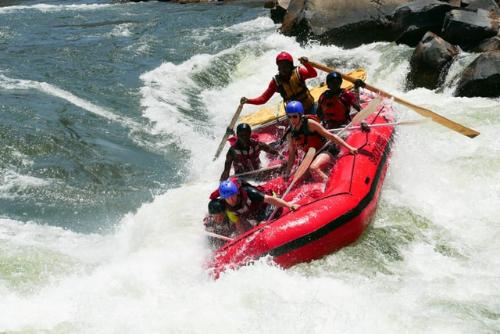
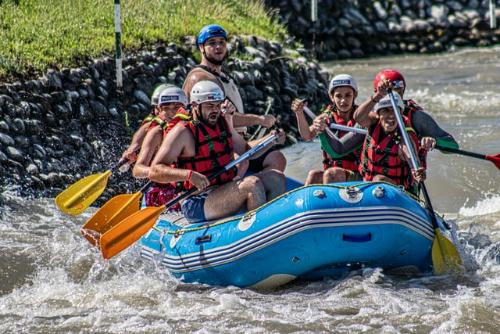
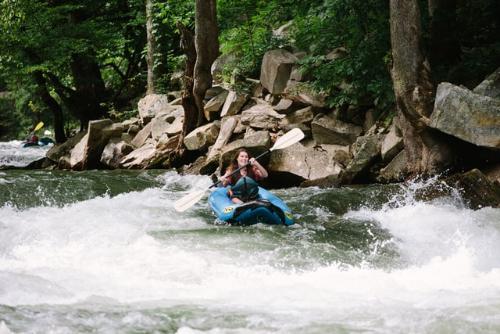

Where and When to Go?
Biome
The coastal Pacific Northwest usually enjoys a more temperate maritime climate, while inland areas range from semi-arid steppe to grassland plains to temperate rainforests!
The major rivers of the area usually have their headwaters in the mountains of the Rocky and Cascade ranges. They travel west to the Pacific ocean.
Season
Melting snowpack raises river levels in April and continues through June or July. That’s when the biggest, hardest rapids will form.
Rafting season usually continues into early fall, usually September, although rivers and routes will be non-navigable that late in the year due to insufficient flow.
Dammed rivers may have a more consistent flow. Some dammed rivers release water every weekend for recreational purposes. If in doubt, call your guide ahead of time, and visit the American Whitewater Association website to view CFS readings from river gauges.
Regions
In general, one of the most popular destinations for whitewater rafting is the Pacific Northwest. Rafters from all over the world travel to this region to explore the rivers.
1
Granite Rapids and the Green Room, Idaho
On Idaho’s Snake River you will find one of the most popular class IV slopes – the Granite rapids. To reach them, you will first need to pass through the Hells Canyon (intimidating, right?). It is the deepest gorge in North America, with enormous waves.
The Granite rapids are known for one of the biggest drops you can experience that can potentially lead you to the Green room. Green room is formed when the wave is so big that it curls over and creates a “room” full of green water.
2
Mule Creek Canyon, Oregon
Located on the Rogue River in Oregon, Mule Creek is perfect for everyone looking for a class III rapids. It is very long, with many rapids on the way, so excitement is guaranteed. The passage is very narrow, and from a wall to a wall there are only 18 feet for you to maneuver.
Some of the most popular rapids in this canyon include Blossom Bar, Jaws, and Devil’s Staircase.
3
Salmon River (Eye of the Needles), Idaho
Eye of the Needles
Another class III rapids can be found on the Lower Salmon Rivers, with a very interesting name – Eye of the needles. This is one of the final rapids you have to pass before you continue your journey on the slopes of the Snake River.
Eye of the needles is one of the sharpest drops, and it will definitely get you that instant adrenaline boost. It can be very challenging to go through it, so make sure to listen to the instructions provided by the tour guide.
Velvet Falls
Another rapid located on the Salmon Rivers, but more upstream than the Eye of the needles, are the Velvet falls rapids. It is located in the Middle Fork of the river and is surrounded by breathtaking scenery.
Velvet falls are ideal for all those who don’t have much experience but would love to get it because they can provide a glimpse of what you could expect out of other, more challenging, rivers.
4
Snake River, Oregon
The list with the crazy names continues and ends with the Wild Sheep rapids – a class IV rapid located in Hell’s canyon. The drops are like a cascade – you start from a small one and then they just get bigger and bigger.
Wild Sheep rapid is one of the longest ones in class IV you can take, and during the summer you need to be extra careful and stick to the left side, in order to avoid holes and lateral waves at the bottom.
The level of the water will dictate when is the best time for you to go whitewater rafting – it shouldn’t be too big nor too small. That’s why in most places, the best time to go whitewater rafting is between mid-spring to late summer. Also, this is the time when the temperature of the water is warm enough for most of the participants in this activity.
Essential Outdoor Skills
What outdoor and survival skills should I master before embarking?
Whitewater rafting is an activity that can be performed only if you do have the following skills:
- Swimming – highly recommended knowing how to swim on all rivers above class II. Freestyle stroke is the fastest and most streamlined.
- Equipment management – you should know where the safety equipment is located and how to use it.
- Hydraulic hole escape – the skipper will teach you this technique beforehand. Essentially, it involves swimming down and out from a recirculating water feature in order to escape the vertical down pull.
Numbers to remember
Safety & Risk
Is this adventure for you?
Whitewater is considered to be a dangerous activity, mostly because of the unpredictability of the river, and situations that cannot be foreseen and prevented beforehand. To ensure the maximum safety is achieved, you need to be very experienced and to follow all the instructions given by the guide regarding behavior on the river, mandatory equipment, and others.
- Wear water shoes! Other shoes can easily get you entrapped if you fall in.
- Wear a helmet! Banging your head on a rock can knock you unconscious.
- Don't underestimate water. Recirculating water can defeat any strength of swimmer.
DO'S
- Follow the guides from the instructor/guide/skipper
- Make sure you are having all the protective equipment
- Make yourself familiar with the river map, surroundings, possible roadblocks, shelters, etc.
DONT'S!
- Don’t overestimate the power or the water
- Don’t go rafting if you are feeling unsure about it, or you are not a very confident swimmer
- Don’t panic if something happens - try to remain calm and recall the instructor’s advice on what to do
Wildlife
What animals can I expect to encounter?
Depending on the river where you have chosen to go rafting, you may encounter different sceneries, and different wildlife, mostly on the sides of the rivers. These animals do not pose any threat to you while you are on the raft. Keep an eye out for dams created by beavers.
During a salmon run, you might be lucky enough to see a black bear fishing in the riffles!
In higher elevations of the PNW, you might see mountain goats. In lower semi-arid regions, you might see antelope or mule deer.
Of course, since you are on the river, there is some wildlife underneath you as well – mostly fast river fish. In the PNW, you’ll often found trout and salmon. They are also no threat to you.

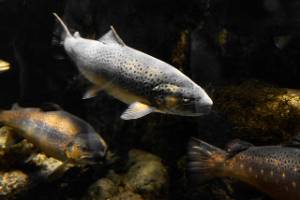
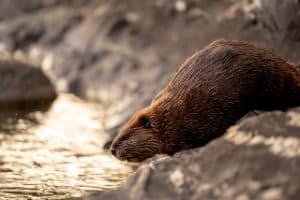
Fitness & Training
What is the recommended level of fitness?
If you are aiming for class I river rafting, then you most probably don’t need to do any exercises, and you can go even if you are physically unfit. But, for those who are looking for a real adrenaline rush and for those who aim to class III or higher, they must be physically fit.
What is meant by physically fit is that the person needs to be completely healthy and in training. Whitewater rafting can really drain your energy, and most of the time you are under direct exposure to the sun. Not to mention that accidents can make you end up in the water, where you have to have the strength to deal with the fast currents.
Training and preparation exercise regimen
To be able to deal with fast waters, you need to be physically fit. This means that you should be in excellent training. To prepare yourself for the rafting, you can introduce prep training three times per week, which will include:
- Running, 30 minutes, uphill or with an incline (level 2-3 at least) on the treadmill
- Push-ups (or any other workout including hands and arms muscle buildup), at least 3 sessions with 3 reps
Gear Guide
What gear do I need for this trip?
Required Gear
The most obvious thing you will need is a raft and paddle (usually provided by the rafting agency)and a safety vest (also provided by the agency). You should also wear a helmet on Class III waters and above. Besides this, there is no other gear you would require to perform this activity.
Supporting Gear
- A bathing suit
- Synthetic shirts
- Footwear in a form of sneakers or sandals with straps (no flip-flops!)
- Hat for sun protection
- Sunglasses
- Windproof clothing (if you are going rafting in colder weather)
- Sunscreen
Accessories & Apps
- A bag for the wet clothing (after you finish rafting)
- A new set of dry clothing, especially if you are rafting during wintertime
Finances & Budget
What are the costs associated with this adventure?
Gear & Products
Price:
The gear you will need to rent, if you choose to organize rafting on your own terms, can cost you somewhere from $50 and more per day, according to the type of gear you have selected. What is included in this price is the rafting kayak and two sets of paddles.
Besides this, you can choose to rent some of the accessories for the raft, which will cost you the following amount of money per day, on average (with the assumption that you will rent this equipment for five days minimum):
- Aluminum dry box – $10
- Life jacket – $10
- Throw cushion – $5
- High volume pump – $15
- First aid box – $20
- Cargo frame – $40
Food & Nutrition
Price:
What you need to bring along with you on the boat are some snacks and water. The cost of the snacks and the water can be $10 to 20 per person, per day. Of course, this will not provide you enough nutrients, so you need to have a full-course meal as well, before or after you finish rafting. The prices for a full course meal can be from $5 up to $20 or more, per person (depending on the area, and the type of restaurant you have chosen).
Transportation
Price:
If you choose to book a rafting tour with an agency, all the transportation costs are usually being covered, and this is a good thing to do. Sometimes when people are accommodated near the starting point, it can be hard to find transportation from the bottom of the river. Local transporters can take advantage and charge you more than $30-40 for a short ride.
- Automobile: Yes
- Airplane: Yes
- Boat: Sometimes
- Horse: No
- Train: No
- Bus/Shuttle: Sometimes
- Dragon: Transportation by dragon not available for this area.
Accommodations
Price:
Most rafters choose to go and camp near the rivers, and usually, they choose to stay in one of the many campsites near the rivers. The fee for these campsites can go from $12 up to $50 and more per vehicle, per day.
On the other hand, if you choose to stay in a hotel, then the agencies are usually recommending some of those that are close to the rafting starting and ending points. The prices for such accommodation can vary and can be, on average, from $25 to $50 and more per night, per person.
- Camping: Yes!
- Hotels: Yes
- Boat: Rarely
- Friends: If they live in the boondocks
Miscellaneous
If you want to go rafting and explore the full potential of the rivers and the activity, the best is to go for a 4 or 5 days trip. Less than that and you will not be able to fully enjoy the activity. Besides this, if you do want to go extra, you might have expenses related to the extra gear you would like to have, and which is not necessary (like a cooling fridge for the raft, for example).
Savings Tips
- Look for discounts when booking a guided tour, such as off-season or group size discounts.
- Go for simpler camping places, with no electricity, for example, to avoid being charged too much
- Prepare your snacks in advance – the cost of food at the place where the rafting starts is normally 10-15% higher than the standard.
Insider Tips
Here's what most people don't know!
- Never bring cotton clothing with you to rafting – cotton gets soaked too quickly and it is very heavy, thus it can be very dangerous to have that extra weight on your body in such conditions.
- Go to the toilet before the tour – there will be no breaks for you to use the toiled once you board the raft!
- Use SFP30 at least to protect yourself from the sun, and apply it regularly every two hours (even though you are rafting in the mountains, the sun can be very dangerous, and it can still give you burns).
What does no one tell you?
Keep a foot tucked into between the bottom of sides of the watercraft. This will help you from falling out when the bolt jolts or dives.
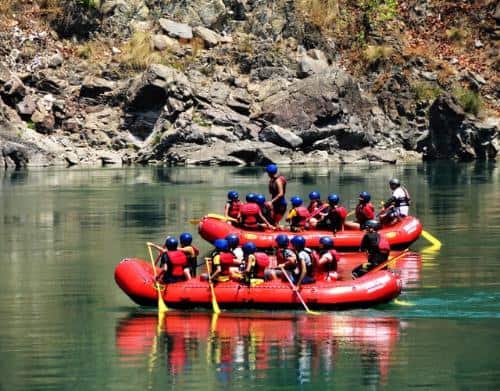
FAQ
Whitewater rafting is a very fun activity you can do with your friends and the adult members of your family. However, this activity is not recommended for the younger generations and kids because it can be dangerous (unless you are going to a class I or class II river, then you can bring even the kids along).
Yes, there is an age restriction based on the type of river you have chosen for the rafting. Kids of the age of 5 are allowed only on very calm waters, with no slopes – class I rivers. Class V and VI rivers are reserved only for adults in excellent physical condition.
Rafting starting and ending points usually have equipped bathrooms you can use, but once you board the raft there is no bathroom you can use while you are on the river. This is why you need to plan to go to the bathroom accordingly.
See Notes on transportation in the Finances & Budget section.
See notes in the “Where and When to Go?” section.
Usually, every raft will have a skipper – a person who will “manage” the raft, be the tour, and be the one to provide first aid, since they are trained to take care of the safety of the activity that is performed.
